4 Most Famous and Delicious Types and Varieties of Melons
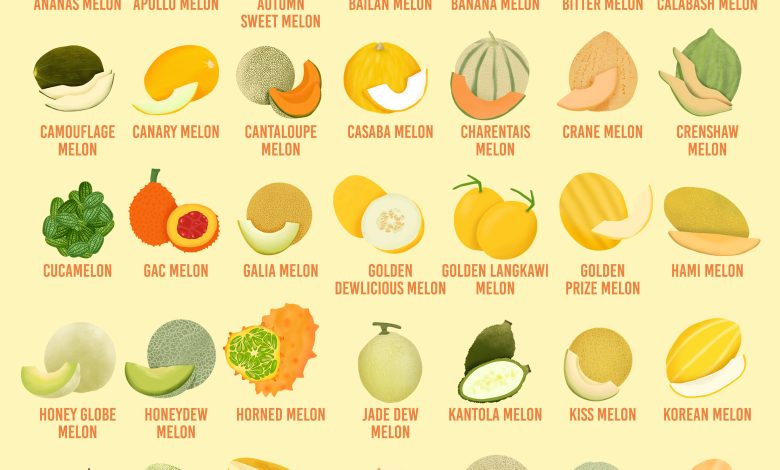
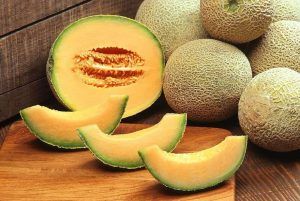 The melon is the fruit of the melonera, a plant of the Cucurbitaceae family whose products are sweet, large and have a hard rind.
The melon is the fruit of the melonera, a plant of the Cucurbitaceae family whose products are sweet, large and have a hard rind.
To develop, it requires dry tropical climates, soils rich in organic materials, which is why they are imported in Europe from Israel, Morocco and Latin America, although there are some varieties produced in France and Spain.
They are rich in vitamins A, B1, B2, B3, B6 and C; They contain iron, potassium, calcium and magnesium.Melon plants have countless varieties, of which the most widely produced in the world is the North American Cantaloupe.Some of the species are as follows:
yellow melon
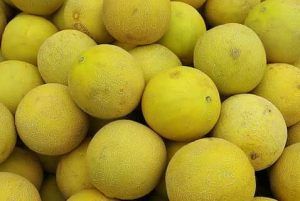 It is a melon of Spanish origin that in some regions is called golden ball and in others canary, characterized by being oval, round or smooth, depending on the area where they are produced and the diversity of the product, because there are round yellow smooth and wrinkled yellow, among others.
It is a melon of Spanish origin that in some regions is called golden ball and in others canary, characterized by being oval, round or smooth, depending on the area where they are produced and the diversity of the product, because there are round yellow smooth and wrinkled yellow, among others.
This variety of yellow melon has a weight that ranges between 1.5 kg and 2 kg, whose shape is oval, its rind smooth and soft, the pulp creamy, white, crunchy, sweeter than green melons, and very fragrant..
The golden ball yellow melon has orange-white pulp, soft and juicy, very sweet.But, despite being very popular, their market in Spain has been shrinking in recent times and it is rather in the United Kingdom that they are eagerly sought after, as they are identified with the exquisite description of “honey dew”.
Of the types of yellow melon, the most exportable is the yellow round smooth one kilo in weight.
Gaul Melon
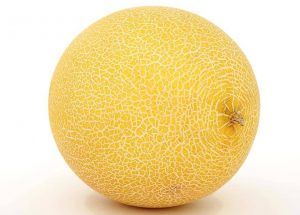 This melon, of Israeli origin, is one of the most popular in the world due to its commercial and agronomic advantages, and its great flavor, highly appreciated by consumers.
This melon, of Israeli origin, is one of the most popular in the world due to its commercial and agronomic advantages, and its great flavor, highly appreciated by consumers.
It is round, small, weighing 1 kg, with a green rind that changes to yellow, white pulp, a delicious fruit that has the advantage of not having an abundance of calories, making it ideal for a healthy diet and avoiding being overweight, at the same time. which is nutritious.
In addition to Israel, it is cultivated in Spain, the United States, Brazil, Costa Rica and Panama, due to its versatility when making crosses and the ease of its cultivation.
Toad skin
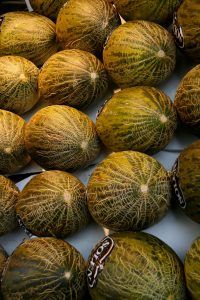 This variety of melon has the honor of being the most cultivated in the Spanish territory. We find it on the Mediterranean coast and in Castilla La Mancha.
This variety of melon has the honor of being the most cultivated in the Spanish territory. We find it on the Mediterranean coast and in Castilla La Mancha.
It is not a euphemism that it is called that way because its skin resembles that of a toad, rough, green, with dark spots.
It is an ovoid-shaped fruit, although there are also round ones, its hybrids tend to be smaller as time goes by, with a weight that does not reach 2 kg.
It has yellowish flesh, compact, with a sweet, crunchy, refreshing flavor, with a lot of water and a great aroma.It is a summer melon, with the beginning of the season in Badajoz, Almería and Campo de Cartagena, and the latest in Castilla La Mancha and Madrid.
Tendral
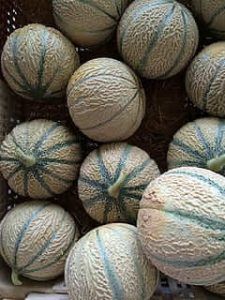 Late-cycle melon from Elche, wrinkled and hard green skin and compact, white, sweet pulp with an excellent flavor, which likes spring, which is the best time to plant it.
Late-cycle melon from Elche, wrinkled and hard green skin and compact, white, sweet pulp with an excellent flavor, which likes spring, which is the best time to plant it.
It is a plant of warm climate and sunny environment, with oval-shaped fruit weighing 2 kg; Although it is of great quality, it is not widely cultivated today.
One of its varieties is the black late tendral, which is dark green, with light green flesh, very sweet, and of great quality. It is known as late Valencian tendral.
There are many other varieties of melon, each one more exquisite, such as Charentais and Charentais cantaloupe (French), cantaloup, casaba and sharlyn (American), branco (Portuguese), Rochet (Spanish).

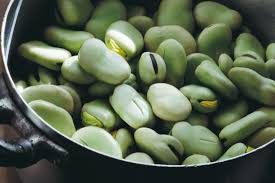
![Photo of Poppy: [Characteristics, Cultivation, Irrigation and Care]](https://www.complete-gardening.com/wp-content/uploads/2022/08/poppy-characteristics-cultivation-irrigation-and-care-390x220.jpg)
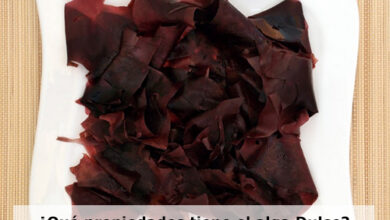
![Photo of Properties of Almonds: [A Very Powerful Food]](https://www.complete-gardening.com/wp-content/uploads/2022/08/properties-of-almonds-a-very-powerful-food-390x220.jpg)